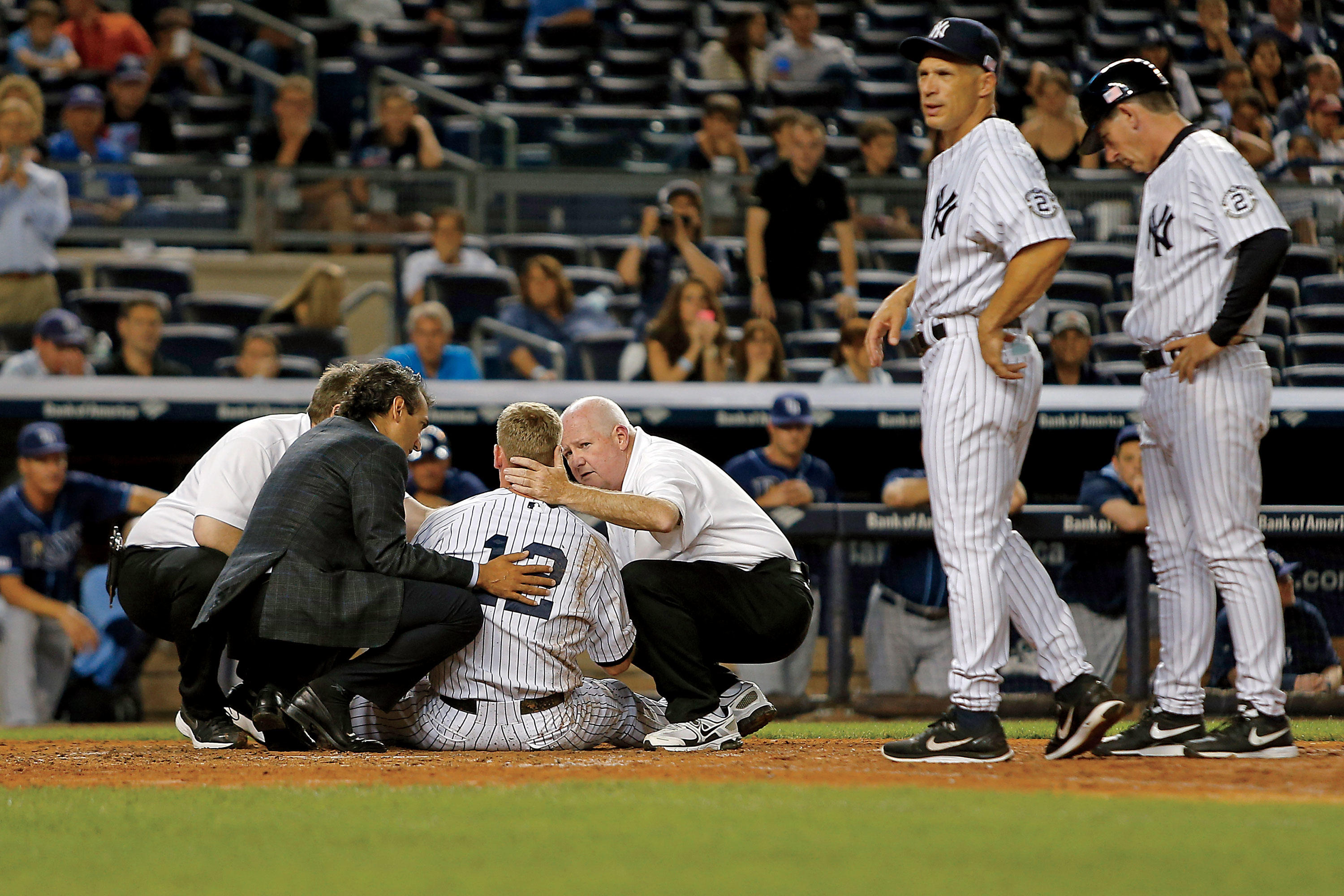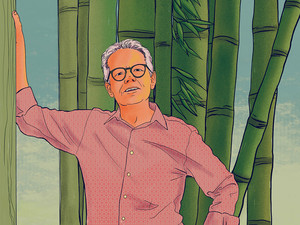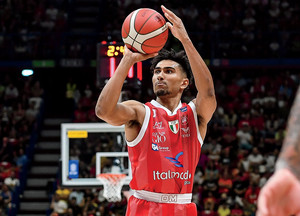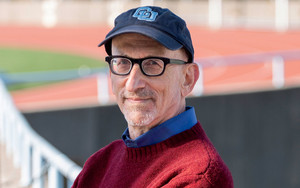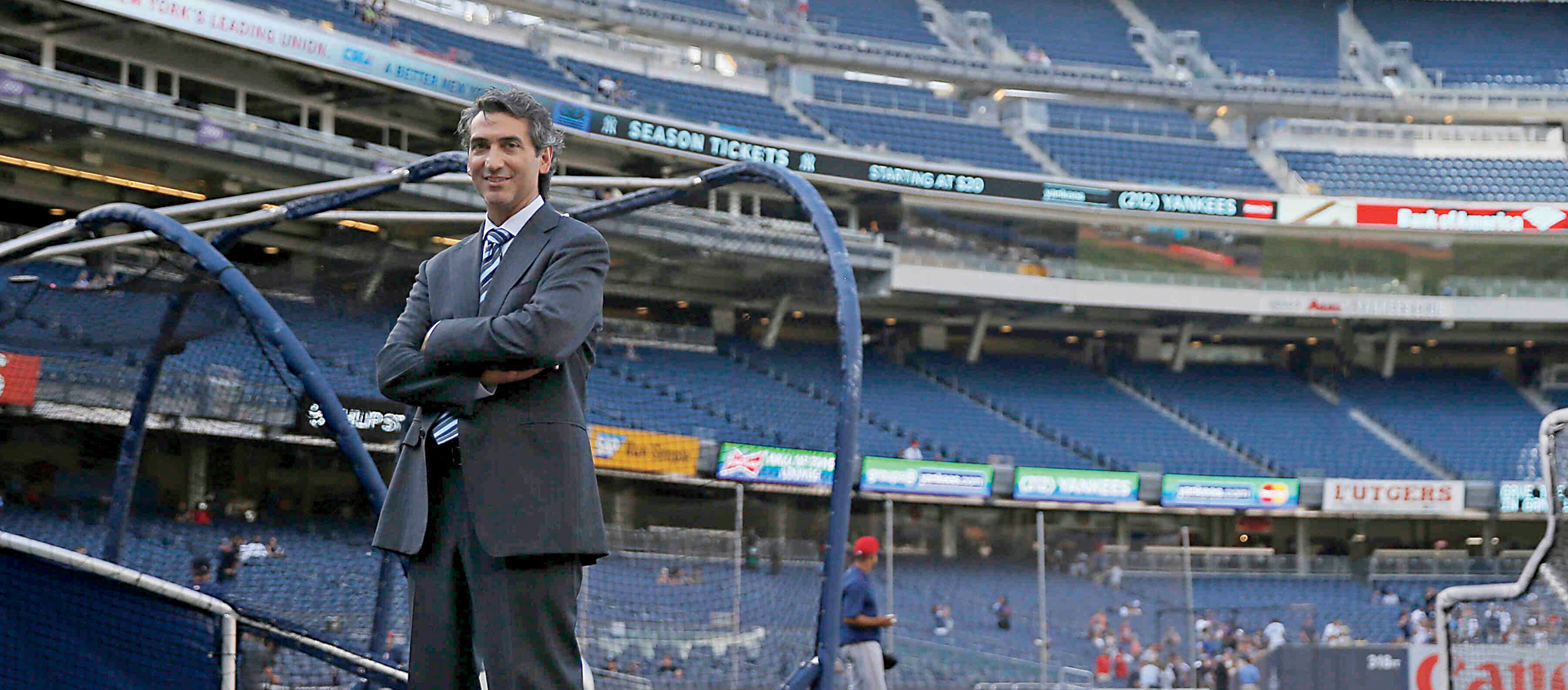
The refrain had been chanted thousands of times before, but it had never sounded like this. Its discordance echoed in a familiar setting: a chilly October night in the Bronx, playoff baseball, Game 1 of the 2012 American League Championship Series. The New York Yankees were battling the Detroit Tigers, and the crowd at Yankee Stadium was standing as one. Their claps were muffled by mittens, so they stomped their feet to the cadence of their chant: “Der-ek Je-ter, Der-ek Je-ter.”
The din rattled around the bleachers, swept through the grandstands, and reverberated down the concrete stanchions into the depths of the stadium, into the training room, where the Yankee captain lay writhing on a training table. The chant from above was infused with an unfamiliar restlessness, because at that moment the crowd’s hopes didn’t depend on a pitch but on a picture: an X-ray of Jeter’s left ankle, which he had just twisted diving for a ground ball at shortstop. Baseball gods willing, the X-ray would come back clean, and the fifty thousand stomping fans, along with millions more worldwide, could exhale.
Underneath the grandstands, the Yankees’ team physician, Christopher Ahmad ’90SEAS, held the news that the sports world waited upon. But he wasn’t thinking about the fans or the media. He wasn’t thinking about the Yankees brain trust that now surrounded Jeter in the training room, a group that included Yankee legends Joe Torre, Tino Martinez, and Reggie Jackson, as well as Yankees senior vice president and general manager Brian Cashman. Ahmad wasn’t even thinking of Jeter’s ankle. He was thinking only of his patient’s emotional state. He was focused solely on one of the most difficult moments a doctor of sports medicine can face: telling a player who can play through anything that he can’t play through this.
“You always have to remember that a professional athlete puts every ounce of himself into his sport — into his body,” says Ahmad. “And if you take that away from him, in a way you’re taking away who he is as a person.”
Ahmad, a professor of orthopedic surgery at Columbia University Medical Center, understands that for an athlete, a split tendon or a torn ligament is more than an injury. It’s a rip in the fabric of his identity, an unraveling of a self that’s been meticulously woven in practices and games since childhood. Major injuries often leave a scar, but in an athlete’s case they also leave an abstract hole, a vague emptiness. When asked in the post-game press conference about Jeter’s reaction to the diagnosis — a season-ending fractured ankle — Cashman answered quietly, “He didn’t have one.”
That night, as Ahmad drove home from Yankee Stadium to Lower Manhattan, where he lives with his wife, orthopedic surgeon Beth E. Shubin Stein ’91CC, ’96PS, and their three children, he immediately got to work. Not on Jeter, but on himself. Like a professional athlete reviewing his game film, Ahmad analyzed his performance in the training room, using a voice recorder to document any observations or areas where he felt he should have been better. Did he deliver the news as well as he could have? How might he have done it differently? For Ahmad, honest self-critique is a cornerstone of genuine self-improvement.
“Many professionals don’t like to face the reality that maybe they’re not as good as they can be,” he explains. “And when it comes to medicine it’s especially difficult to think, ‘I didn’t perform well, and that affected my patient.’”
That’s why he dissects all aspects of his role as the Yankees’ team physician, including his bedside manner. By analyzing his interactions with injured athletes, he’s refined a communication skill set that helps athletes through the lowest points of their careers.
“First, you have to be humble — don’t use technical language they can’t understand,” Ahmad advises. “Sit down next to them and talk to them eye-to-eye. Don’t stare down at them as they sit on the training table. And when giving bad news, don’t be ambiguous. Explain that they can’t play through the injury, no matter how hard they try. Then explain that there is a solution and that you’ll do everything you can to fix the problem.”
Ahmad’s guiding principle in these interactions is to put himself in the athlete’s shoes — an easy fit for a man who spent much of his childhood wearing soccer cleats. He grew up on Long Island with a nurse mother and a psychiatrist father. But despite family roots in medicine, Ahmad first set his aspirations on professional soccer.
As a young player he was gifted, but it was his deficiencies — or more accurately, his response to them — that propelled him to elite levels. If a teammate had better foot skills, for instance, Ahmad would design and execute drills that would isolate the skill for improvement. The payoff was substantial: he was selected to play in the Olympic Development Program and was recruited for Columbia’s nationally ranked soccer program. This success validated Ahmad’s approach to personal improvement and would later translate to all aspects of his life as a surgeon.
Ahmad collected his insights into self-betterment in his recent book Skill: 40 Principles that Surgeons, Athletes, and Other Elite Performers Use to Achieve Mastery. In this guide, Ahmad emphasizes the difference between “soft skills” and “hard skills,” and stresses the importance of distinguishing and cultivating both types of abilities. Soft skills, Ahmad says, are more abstract, rooted in creative improvisation, foresight, and adaptive problem solving, “like a quarterback looking across the field and reading a defense.” He argues that soft skills separate elite surgeons from good ones: a good surgeon, for example, can work around the spate of blood that comes from operating in a region with an unusually high number of blood vessels; elite surgeons notice these vessels before they even begin, clamping them down preemptively.
That’s not to say that “hard skills” — the technical abilities that one develops through meticulous repetition — are unimportant. They are, after all, the foundation upon which soft skills are built. Ahmad began developing his hard skills in orthopedic surgery before he was aware of it. His first summer job was for an engineering firm that made helicopter components, and this internship illuminated his mechanical gifts. “I always had a sense I could put things back together,” Ahmad says. When it was time to declare his major at Columbia, Ahmad chose mechanical engineering.
Still, soccer was Ahmad’s passion. In 1988 he earned an All-Ivy honorable mention, and following graduation he strongly considered trying to go pro. However, after discussing it with his family, Ahmad made the hard decision to retire from the game he loved. “It’s very difficult,” he says. “You play this game your whole life, train almost every day to get to this level, then one day your college career is over.”
It wasn’t goodbye, though — not to soccer or to Columbia. While playing soccer, Ahmad was fascinated by the effect injuries had on his body, and determined to reduce their impact on his abilities. If he twisted his ankle, he didn’t just have a trainer tape it — he studied the trainer’s technique, then experimented on himself to devise a better taping procedure that gave his ankle the care it needed while minimizing its encumbrance. His devotion to athletics, coupled with his studies in mechanical engineering, led Ahmad naturally to sports medicine, with a specific interest in two fulcrums of the human body, the knees and elbows. “Derek Jeter dreamed of being a shortstop for the Yankees; I dreamed of leading sports medicine at Columbia,” Ahmad says. “And choosing this field allowed me to stay connected to soccer.”
Ahmad earned his medical degree at New York University and completed his residency at Columbia Orthopaedics. One of Ahmad’s biggest career breaks came in 2000, when he was selected for the sports-medicine fellowship at the Kerlan-Jobe Orthopedic Clinic in Los Angeles. There, Ahmad provided treatment for the Los Angeles Dodgers and worked with the orthopedic pioneer Frank Jobe, who in 1974 changed baseball forever by developing a way to surgically reconstruct a torn ulnar collateral ligament, or UCL, the absolutely vital — and all too fragile — part of a pitcher’s elbow. The operation, known today as “Tommy John Surgery” after the first baseball player to undergo it, captivated the rookie surgeon. “The idea of taking a pitcher’s ligament that’s torn — that’s stopping him from throwing — and then getting him to throw ninety-five miles per hour again, all through a very precise surgery that relies on your technical skill: it’s like playing World Cup soccer. That was the stage I wanted to be on.”
Since his one-on-one training with Jobe, Ahmad has established himself as one of the world’s preeminent Tommy John surgeons, winning multiple research awards and publishing over two hundred articles and fifty book chapters on elbow, shoulder, and sports medicine.
Ahmad became Yankee team physician in 2009, a post in which he regularly deals with players’ sprains, pulls, fractures, ruptures, bruises, soreness, and muscle tears.
“One of the things that initially drew us to Dr. Ahmad was his vast experience in diagnosing and treating athletes who perform at the highest level of sports,” says Cashman. “As our head team physician, he has been thorough, thoughtful, and dedicated to improving his craft.”
He has also seen some curveballs. In 2013, Yankees star Alex Rodriguez filed a malpractice lawsuit against Ahmad, claiming the physician didn’t inform him about a joint tear in his hip (part of what the New York Daily News called Rodriguez’s “scorched-earth battle to dodge his historic Biogenesis steroid ban”). The suit was later dropped.
Ahmad has never let a distraction disrupt his game. “I’m always looking to contribute to orthopedics,” he says, “always looking to develop a better surgical technique.”
And baseball needs it. Between 2012 and 2015, Major League Baseball players underwent Tommy John surgery 114 times, compared to 69 operations from 2008 to 2011. Even more concerning is the growing number of youth baseball players who suffer elbow injuries. In a recent CUMC study, Ahmad discovered that the number of UCL reconstructions per hundred thousand people has tripled from 2002 to 2011. Almost all of that growth occurred in males seventeen to twenty years old.
Major League Baseball has asked Ahmad to join the advisory board of its Pitch Smart program, an initiative to better educate players and coaches on how to keep elbows healthy. Ahmad is also meeting with orthopedic and sports-medicine specialists as he builds a database of UCL reconstructions in the US, a trove of information that will provide invaluable insight into the scope and root causes of the injury.
Evidence of Ahmad’s achievements can be found on his office walls, which are filled with pictures of sports stars. The inscriptions go beyond mere pleasantries. A signed photo from a track-and-field athlete says it all: “Dr. Ahmad — Thank you for putting me back together.”
Get Better: Skill-Sharpening Tips from Dr. Ahmad
Adapted from Skill: 40 Principles that Surgeons, Athletes, and Other Elite Performers Use to Achieve Mastery.
Don’t Fall for the Prodigy Myth
Too often it’s believed that naturally gifted people can effortlessly do things that others will never be able to do. But talent in any field is honed through specific regimens, like persistent training and study. Remember that talent is not bestowed — it’s acquired.
Always Carry a Notebook
High-level performers keep a performance journal. They write and reflect. Get a journal and write your results from today, your ideas for tomorrow, and your goals for next week.
Reverse Engineer Your Mentor
Identify the heroes or mentors who have inspired you, and watch them closely: study their preparation, their work ethic, their leadership skills, and how they respond to pressure. Do not passively observe them. Take command and immerse yourself in their excellence.
Let Go of Ego
Self-critique is difficult but essential. People who pay deeper attention to an error learn significantly more than those who don’t. Address mistakes immediately, and take them seriously but never personally.
Isolate the Sweet Spot
You reach the sweet spot when you put yourself at the edge of your ability, which is where you learn the best and the quickest. The sweet spot is difficult, elicits frustration, creates alertness to errors, forces a struggle, and requires full engagement. Push to find your personal sweet spot.
